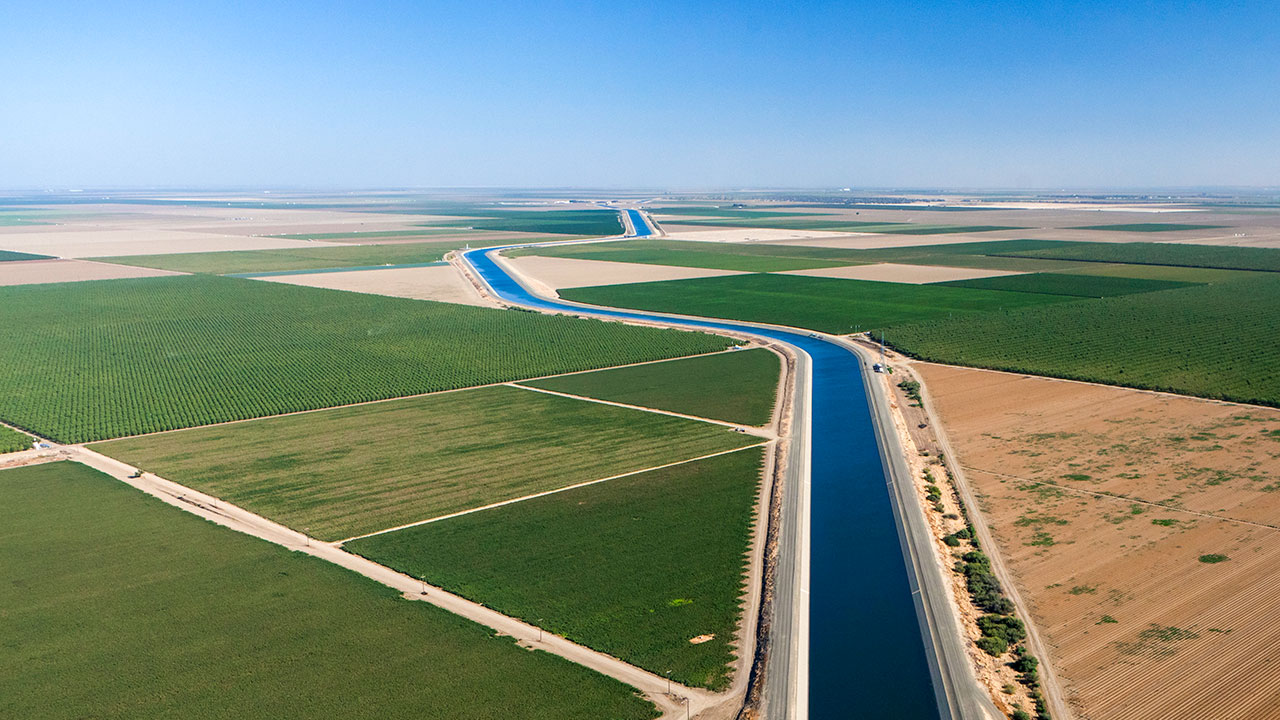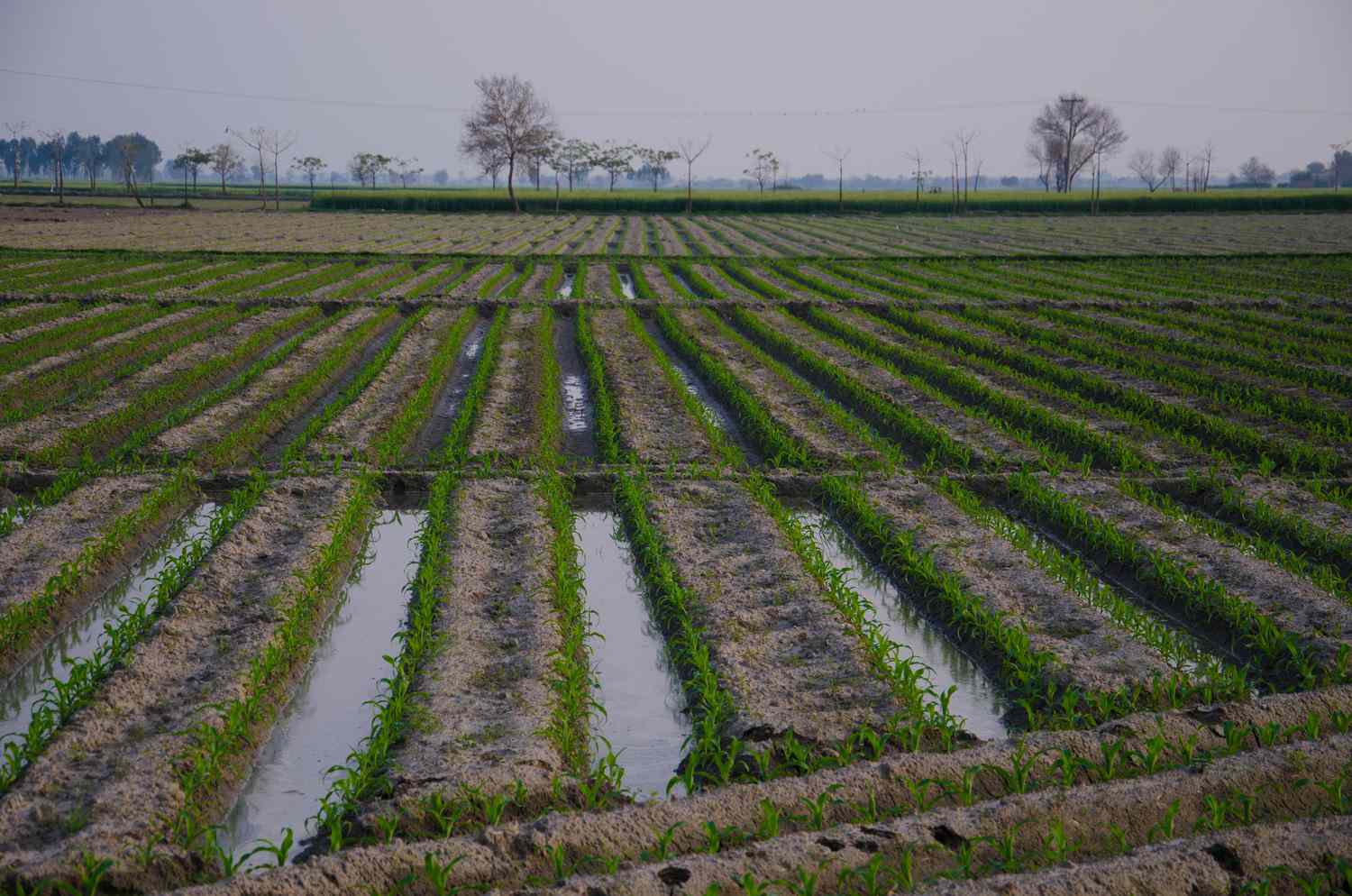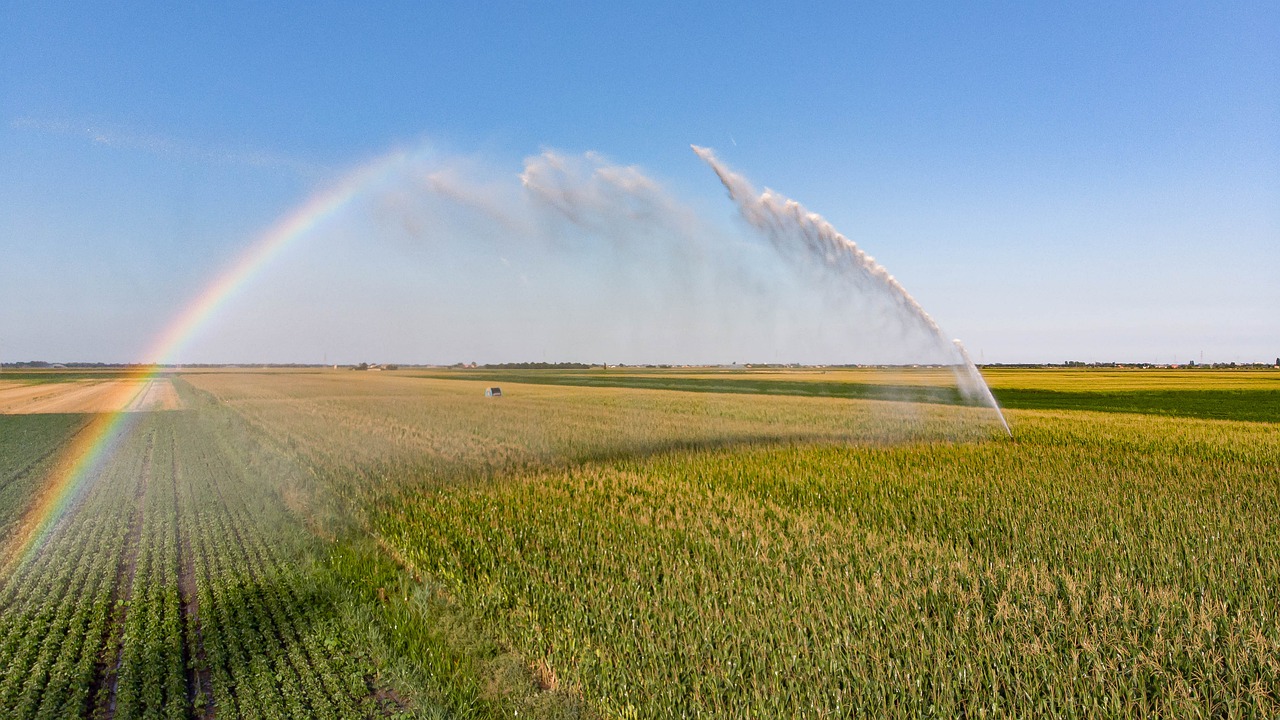Home>Gardening News and Trends>Latest News>Why Is Irrigation Needed In California’S Central Valley?


Latest News
Why Is Irrigation Needed In California’S Central Valley?
Modified: January 22, 2024
Find out the latest news on why irrigation is crucial in California's Central Valley and its impact on agriculture and water resources.
(Many of the links in this article redirect to a specific reviewed product. Your purchase of these products through affiliate links helps to generate commission for Chicagolandgardening.com, at no extra cost. Learn more)
Table of Contents
- Introduction
- Historical Context of Agriculture in California’s Central Valley
- Water Resources in California’s Central Valley
- Climate and Rainfall Patterns in California’s Central Valley
- Water Demand for Agriculture in California’s Central Valley
- Significance of Irrigation in California’s Central Valley
- Challenges and Issues in Irrigation Practices
- Government Policies and Regulations on Irrigation in California’s Central Valley
- Water Conservation and Sustainable Irrigation Practices
- Conclusion
Introduction
Welcome to the heart of California’s agricultural industry – the Central Valley. Spanning an impressive 450 miles from north to south, this region stretches between the Sierra Nevada Mountains in the east and the Coast Ranges in the west. The Central Valley is renowned for its fertile soil, making it one of the most important agricultural regions in the United States and a key player in the global food supply chain. However, the success of agriculture in this area is highly dependent on one crucial element – water.
The Central Valley’s Mediterranean climate, characterized by hot, dry summers and mild, wet winters, poses numerous challenges for agriculture. The limited rainfall, coupled with high evaporation rates, makes it difficult to sustain crop growth. To overcome this hurdle, farmers have long relied on irrigation to provide the water necessary for their crops. In fact, irrigation has become an integral part of the agricultural landscape in the Central Valley, enabling the production of a wide range of commodities, including fruits, vegetables, nuts, and dairy products.
Despite its importance, irrigation in the Central Valley is not without its challenges. Water scarcity, population growth, climate change, and environmental concerns have all contributed to a complex and often contentious water management landscape. In recent years, the region has experienced prolonged periods of drought, leading to increased competition for water resources. This has prompted a growing urgency to find sustainable and innovative solutions to ensure the continued viability of the agricultural industry in the Central Valley.
In this article, we will explore the historical context of agriculture in California’s Central Valley, the water resources available, the significance of irrigation, the challenges faced in irrigation practices, and the government policies and regulations that have been put in place to address these issues. We will also discuss the importance of water conservation and sustainable irrigation practices, and how they can contribute to the long-term sustainability of agriculture in the Central Valley.
Historical Context of Agriculture in California’s Central Valley
The agricultural history of California’s Central Valley dates back centuries, with indigenous tribes cultivating the land long before the arrival of European settlers. However, it was the advent of irrigation that transformed this fertile region into the agricultural powerhouse it is today.
Spanish explorers and missionaries were among the first to introduce irrigation techniques to the area in the late 18th century. They constructed acequias (irrigation canals) to divert water from nearby rivers and streams, allowing for the cultivation of crops such as wheat, barley, and grapes. As more settlers arrived during the Gold Rush in the mid-19th century, the demand for agricultural products grew, leading to the expansion of irrigation systems and the cultivation of new crops.
The Central Valley’s vast expanse and fertile soil soon attracted large-scale agricultural operations, with the construction of extensive irrigation networks. The growth of railroads further fueled agricultural development, enabling the transportation of crops to markets across the country. By the early 20th century, the Central Valley had become a major supplier of food and agricultural commodities.
Throughout its history, the agricultural sector in the Central Valley has evolved, adapting to changing market demands and technological advancements. In the early 20th century, the focus shifted from traditional crops like wheat and barley to more profitable commodities such as cotton, citrus fruits, and tree nuts. The region became a leading producer of crops like almonds, pistachios, and walnuts, capitalizing on its ideal climate and ample water resources.
However, the growth of agriculture in the Central Valley has not been without its challenges. The reliance on irrigation has resulted in significant changes to the region’s natural hydrology and ecosystem. Wetlands and marshes have been drained to make way for farmland, causing the loss of critical habitats for wildlife and impacting the overall ecological balance.
The historical context of agriculture in California’s Central Valley highlights the complex relationship between human intervention, water management, and sustainable land use practices. Understanding this context is crucial in addressing the challenges faced by the region today and finding innovative solutions to ensure the long-term viability of agriculture in the Central Valley.
Water Resources in California’s Central Valley
The agricultural success of California’s Central Valley hinges on its access to reliable water resources. The region relies primarily on two main sources: surface water and groundwater.
Surface water is derived from rivers, streams, and reservoirs. The Sierra Nevada Mountains, located to the east of the Central Valley, play a vital role in providing this surface water through the snowmelt runoff. The snowpack acts like a natural reservoir, gradually releasing water during the dry season, which replenishes rivers and streams. The Sacramento and San Joaquin Rivers are the main water arteries that flow through the valley, supplying water to both agricultural and urban areas.
To manage and store this surface water, a network of reservoirs and canals has been developed. Major reservoirs like the Shasta and Oroville provide critical water storage capacity, ensuring a constant supply of water even during dry periods. Canals, such as the California Aqueduct, distribute the water to various regions within the Central Valley.
In addition to surface water, groundwater also plays a significant role in supporting agriculture in the Central Valley. Groundwater is stored in underground aquifers, which act as natural reservoirs. This water source is accessed through wells and has historically been a crucial backup during drought periods or when surface water supplies are limited.
However, over-reliance on groundwater has led to significant challenges. In recent decades, due to increased demand and prolonged periods of drought, groundwater has been pumped at unsustainable rates, causing the water table to drop and land subsidence. This has resulted in the depletion of aquifers and the deterioration of water quality in some areas.
Recognizing the importance of sustainable water management, California has implemented various regulations and policies to address the challenges facing water resources in the Central Valley. These include the Sustainable Groundwater Management Act (SGMA), which aims to ensure the long-term sustainable use of groundwater and the restoration of depleted aquifers.
Understanding and effectively managing the water resources of the Central Valley is crucial for maintaining a stable agricultural economy and ensuring the region’s continued prosperity. It requires a balance between the sustainable use of surface water, the responsible management of groundwater, and the implementation of innovative water conservation practices.
Climate and Rainfall Patterns in California’s Central Valley
The climate of California’s Central Valley is characterized as a Mediterranean climate, which is known for its hot, dry summers and mild, wet winters. This unique climate pattern significantly influences the agricultural practices in the region.
During the summer months, temperatures in the Central Valley can soar, often reaching triple digits. This heat, coupled with low humidity and strong winds, creates an arid environment that is not conducive to crop growth without additional water. The limited availability of rainfall during this period makes irrigation a necessity for sustaining agriculture.
In contrast to the dry summers, the winter months bring relief in the form of rainfall. From November to March, storms originating from the Pacific Ocean move inland, bringing much-needed precipitation to the Central Valley. The majority of the annual rainfall in the region occurs during these winter months, providing an opportunity for farmers to replenish surface water supplies and recharge underground aquifers.
Rainfall patterns in the Central Valley can vary significantly from year to year. The region has experienced both periods of drought and periods of above-average rainfall throughout its history. This variability poses challenges for farmers who must carefully manage their water resources to ensure a reliable supply for their crops.
In recent years, the Central Valley has faced severe droughts, resulting in water shortages and the implementation of water conservation measures. Prolonged droughts have not only affected crop production but have also contributed to ecological and environmental challenges, including the decline of certain species and the increased risk of wildfires.
The changing climate patterns pose additional challenges for agriculture in the Central Valley. As temperatures increase and weather patterns shift, farmers must adapt their practices to mitigate the impact of extreme heat and unpredictable rainfall. This may involve implementing water-efficient irrigation systems, adopting drought-resistant crop varieties, and practicing soil conservation techniques to enhance water retention.
Understanding the climate and rainfall patterns of the Central Valley is crucial for effective water management and sustainable agriculture. It allows farmers and policymakers to anticipate and plan for fluctuations in water availability, minimize the impact of drought, and implement strategies to ensure the long-term viability of agricultural production in the region.
Water Demand for Agriculture in California’s Central Valley
Agriculture in California’s Central Valley is a water-intensive industry. The region’s fertile soil and favorable climate have made it an ideal location for growing a wide variety of crops. However, this productivity comes at a cost, as crop water requirements are substantial.
The water demand for agriculture in the Central Valley can be attributed to several factors. First and foremost is the sheer size of the region’s agricultural industry. The Central Valley is home to over 20,000 farms, covering millions of acres of land. These farms produce a diverse range of crops, including fruits, vegetables, nuts, grains, and dairy products, all of which require varying amounts of water to thrive.
The type of crop grown greatly influences its water needs. For example, tree crops like almonds and walnuts require significant water throughout the year, particularly during the summer months when they bear fruit. Row crops, such as tomatoes and lettuce, also have high water demands but for a shorter period. Adequate water supply is crucial during key stages of crop development, including germination, growth, flowering, and fruiting.
In addition to the crop type, the irrigation method utilized also influences water demand. Conventional flood irrigation, which involves flooding fields with water, tends to be more wasteful and results in higher water consumption. Conversely, modern irrigation techniques like drip irrigation or sprinkler systems are more water-efficient, as they deliver water directly to the plant’s root zone, minimizing losses due to evaporation and runoff.
Water demand for agriculture also varies with climatic conditions, including temperature, humidity, and wind speed. During hotter and drier periods, plants require more water to compensate for increased evapotranspiration rates. Furthermore, seasonal fluctuations in rainfall patterns can impact overall water demand, with farmers relying more heavily on irrigation during drought periods.
The significant water demand for agriculture in the Central Valley has implications for water management in the region. Water scarcity, population growth, and environmental concerns have led to increased competition for limited water resources. Balancing the needs of agriculture with other sectors, such as municipal and environmental uses, is a complex challenge that requires careful planning and sustainable water management practices.
Farmers and policymakers are actively exploring opportunities to improve water-use efficiency in agriculture. This includes promoting the adoption of advanced irrigation technologies, implementing best management practices, and supporting research and development of drought-tolerant crop varieties. By optimizing water use in agriculture, the Central Valley can strive towards greater water security, economic sustainability, and environmental stewardship.
Significance of Irrigation in California’s Central Valley
Irrigation plays a crucial role in the agricultural success of California’s Central Valley. With its Mediterranean climate and limited rainfall, irrigation is essential for sustaining crop growth and maintaining a thriving agricultural industry in the region.
One of the primary reasons for the significance of irrigation in the Central Valley is the arid conditions during the summer months. These hot and dry conditions, coupled with high evaporation rates, make it difficult for crops to obtain the water they need solely from natural rainfall. Without supplemental irrigation, crop yields would be severely reduced, leading to significant economic losses for farmers and impacting the food supply chain.
Additionally, the fertility of the soil in the Central Valley is one of the region’s greatest assets. However, this soil also has a high drainage rate, meaning it cannot retain water for long periods without assistance. Irrigation allows for the controlled and precise application of water directly to the root zone of plants, ensuring they receive the necessary moisture to grow and thrive.
Irrigation in the Central Valley has not only made it possible to cultivate a wide range of crops, but it has also enabled the region to become a major agricultural producer on a global scale. The Central Valley is known for its diverse array of agricultural commodities, including almonds, grapes, tomatoes, cotton, and citrus fruits. These crops generate significant revenue, provide employment opportunities, and contribute to the overall economic development of the region.
Moreover, irrigation has allowed for extended growing seasons and increased crop yields. By carefully managing water resources, farmers can optimize plant growth and maximize productivity. This is particularly important for high-value crops that require precise control over water availability at different stages of growth.
The significance of irrigation in the Central Valley extends beyond crop production alone. It also has implications for water management and conservation. Through better water utilization practices, such as the use of efficient irrigation technologies, farmers can reduce water wastage and improve overall water use efficiency. This is crucial in a region where water resources are often limited and subject to increasing demand.
Overall, irrigation is a key component in the agricultural landscape of California’s Central Valley. It not only enables farmers to overcome the challenges of a Mediterranean climate but also supports sustainable agricultural practices, economic prosperity, and food security for both the local and global populations.
Challenges and Issues in Irrigation Practices
While irrigation is vital for agriculture in California’s Central Valley, it is not without its challenges and issues. The region faces a range of obstacles related to water availability, water quality, efficiency, and sustainability.
One of the primary challenges is water scarcity. The Central Valley relies heavily on both surface water and groundwater supplies, but prolonged droughts and increased water demand have strained these resources. In times of limited water availability, farmers must carefully manage their water allocation and prioritize crops that are most essential for their economic viability.
Moreover, the over-extraction of groundwater has led to a decline in aquifer levels and land subsidence in certain areas of the Central Valley. This poses a significant threat to long-term water availability and can result in the contamination of freshwater sources with saltwater intrusion.
Water quality is another issue in irrigation practices. Improper management of irrigation water, such as over-irrigation or excessive use of fertilizers and pesticides, can lead to the accumulation of salts and pollutants in the soil, affecting crop health and productivity. Additionally, runoff from agricultural fields can carry these contaminants into nearby water sources, posing environmental and health risks.
Efficiency in irrigation practices is crucial for the sustainable use of water resources. Conventional flood irrigation methods, which involve flooding fields with water, can result in significant water losses through evaporation, runoff, and deep percolation. Transitioning to more efficient irrigation systems, such as drip irrigation or precision sprinklers, can help minimize water wastage and improve crop yields.
Another challenge lies in the aging infrastructure of irrigation systems. Many canals, ditches, and pipelines in the Central Valley were built decades ago and are in need of repair and modernization. Leakage and inefficiencies in the distribution networks can result in further water loss, reducing the overall effectiveness of irrigation practices.
Furthermore, the diverse range of crops grown in the Central Valley presents challenges for irrigation management. Different crops have varying water requirements at different growth stages. This necessitates careful scheduling and precise water application to optimize yield while minimizing water consumption.
The complex and interconnected nature of these challenges requires a multi-faceted approach for their resolution. Collaboration between farmers, policymakers, scientists, and water management agencies is crucial. Implementing advanced irrigation technologies, adopting best management practices, and promoting water-efficient crop varieties can all contribute to sustainable and responsible irrigation practices in the Central Valley.
Government Policies and Regulations on Irrigation in California’s Central Valley
The management of water resources and irrigation practices in California’s Central Valley is heavily regulated by government policies and regulations. These measures are put in place to balance water allocation, protect water quality, promote water conservation, and ensure the long-term sustainability of agriculture in the region.
One of the key regulatory frameworks governing irrigation in the Central Valley is the California Water Code, which outlines the rights and responsibilities of water users. The code establishes water rights, sets standards for water quality, and provides a legal framework for water diversion, distribution, and use in the state.
The California State Water Resources Control Board (SWRCB) plays a crucial role in regulating irrigation practices. Among its responsibilities is the issuance of permits and licenses for the use of surface water and groundwater. The SWRCB also establishes rules and regulations for water quality and implements enforcement actions to ensure compliance.
The Sustainable Groundwater Management Act (SGMA), passed in 2014, is another significant policy governing irrigation in the Central Valley. SGMA requires local groundwater management agencies to develop and implement groundwater sustainability plans to achieve long-term sustainable use of groundwater. This includes setting goals, monitoring groundwater levels, and implementing measures to manage and recharge aquifers.
The state and federal governments also provide financial incentives and support programs to promote water-efficient irrigation practices. The California Department of Food and Agriculture, for example, offers grants and cost-sharing programs to help farmers invest in more efficient irrigation systems and technologies. These programs aim to improve water-use efficiency, reduce water loss, and enhance overall irrigation practices in the Central Valley.
Environmental regulations also play an essential role in ensuring sustainable irrigation in the region. The Endangered Species Act and the Clean Water Act, enforced by federal and state agencies, protect sensitive habitats and water bodies, preventing excessive water diversions and pollution. These regulations aim to safeguard the ecological health of the Central Valley and ensure the survival of endangered species.
Additionally, land use planning and zoning regulations influence irrigation practices. Agricultural zoning designations protect farmland from conversion to urban or industrial uses, preserving the agricultural landscape and securing future water resources for farming activities.
The government policies and regulations on irrigation in the Central Valley are not static. They continually evolve to adapt to changing environmental conditions, population growth, and emerging water management challenges. Collaboration between government agencies, water districts, farmers, and other stakeholders is paramount in developing and implementing effective policies that balance the needs of agriculture while protecting the integrity and sustainability of water resources.
Water Conservation and Sustainable Irrigation Practices
Water conservation and sustainable irrigation practices are critical in ensuring the long-term viability of agriculture in California’s Central Valley. These practices aim to optimize water use, improve efficiency, and minimize the environmental impact of irrigation. Several strategies and techniques have been developed to promote water conservation and sustainability in the region.
One key approach is the adoption of advanced irrigation technologies. Drip irrigation and precision sprinkler systems deliver water directly to the plant’s root zone, minimizing water loss through evaporation and runoff. These systems allow for precise control over water application, ensuring that crops receive the necessary moisture without wastage.
Additionally, soil moisture sensors and weather-based irrigation controllers help farmers monitor soil moisture levels and adjust irrigation schedules accordingly. This avoids over-watering and ensures that water is applied only when and where it is needed.
Another important aspect of water conservation is implementing efficient irrigation scheduling and management practices. This involves considering factors such as crop type, growth stage, soil conditions, and climate data to determine the appropriate timing and quantity of water to be applied. Farmers can also prioritize crops with higher water-use efficiency and explore alternative irrigation techniques such as deficit irrigation, where water is intentionally applied below full crop demand.
Techniques such as mulching and cover cropping can also contribute to water conservation efforts. Mulching involves covering the soil surface with organic materials, such as straw or shredded bark, to reduce evaporation, regulate soil temperature, and improve moisture retention. Cover cropping involves planting non-harvested crops between cash crops to protect the soil from erosion, enhance soil fertility and structure, and reduce water runoff.
Water reuse and recycling strategies are gaining prominence in the Central Valley. Treated wastewater can be reclaimed and utilized for irrigation purposes, reducing the reliance on freshwater sources. This approach not only conserves water but also improves water quality by minimizing the discharge of pollutants into natural water bodies.
Furthermore, education and outreach programs play a vital role in promoting water-conscious practices among farmers. Providing training and resources on efficient irrigation techniques, best management practices, and the latest research and innovations can empower farmers to make informed decisions and implement sustainable irrigation strategies.
Government incentives and financial support programs also incentivize farmers to adopt sustainable irrigation practices. Grants, loans, and cost-sharing programs can assist in the implementation of water-efficient technologies and infrastructure upgrades. This support helps overcome initial investment barriers and encourages the wider adoption of sustainable irrigation practices.
Water conservation and sustainable irrigation practices are crucial not only for the long-term sustainability of agriculture in the Central Valley but also for the overall resilience of the region’s water resources. By implementing these practices, farmers can optimize water use, reduce environmental impact, enhance crop yields, and contribute to a more sustainable agricultural sector.
Conclusion
The significance of irrigation in California’s Central Valley cannot be understated. This region, known for its fertile soil and favorable climate, relies heavily on irrigation to sustain its thriving agricultural industry. By providing the necessary water for crop growth, irrigation has transformed the Central Valley into one of the most productive agricultural regions in the United States and a major global supplier of food and commodities.
However, irrigation in the Central Valley faces a myriad of challenges. Water scarcity, water quality issues, efficiency concerns, and environmental impacts all require careful management and innovative solutions. The government has implemented policies and regulations to regulate water use and protect water resources, while promoting sustainable irrigation practices.
Water conservation and sustainable irrigation practices are essential for the long-term viability of agriculture in the Central Valley. Advanced irrigation technologies, efficient scheduling, soil moisture monitoring, and adoption of cover cropping and mulching techniques all contribute to optimizing water use and reducing wastage. The reuse and recycling of water, along with education and outreach programs, further support sustainable practices.
The continued success of agriculture in the Central Valley hinges on the collaborative efforts of farmers, policymakers, scientists, and water management agencies. By working together, it is possible to strike a balance between the economic importance of agriculture and the need to protect and sustain water resources for future generations.
Ultimately, ensuring a resilient and sustainable agricultural industry in California’s Central Valley requires ongoing innovation, adaptation, and commitment to responsible water management practices. By addressing the challenges and prioritizing sustainable irrigation practices, we can safeguard the environment, preserve water resources, and support the continued prosperity of agriculture in this vital region.





